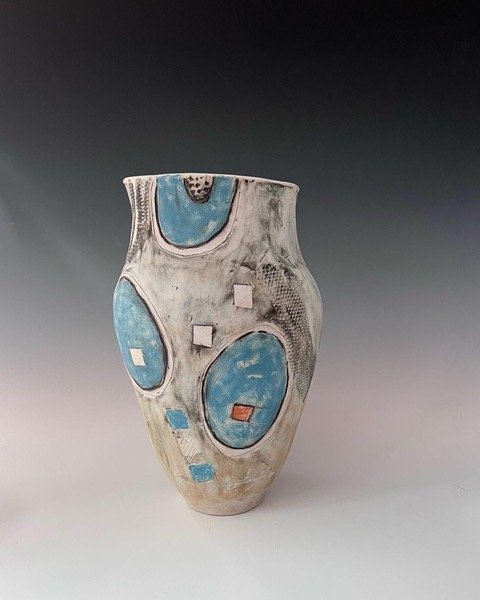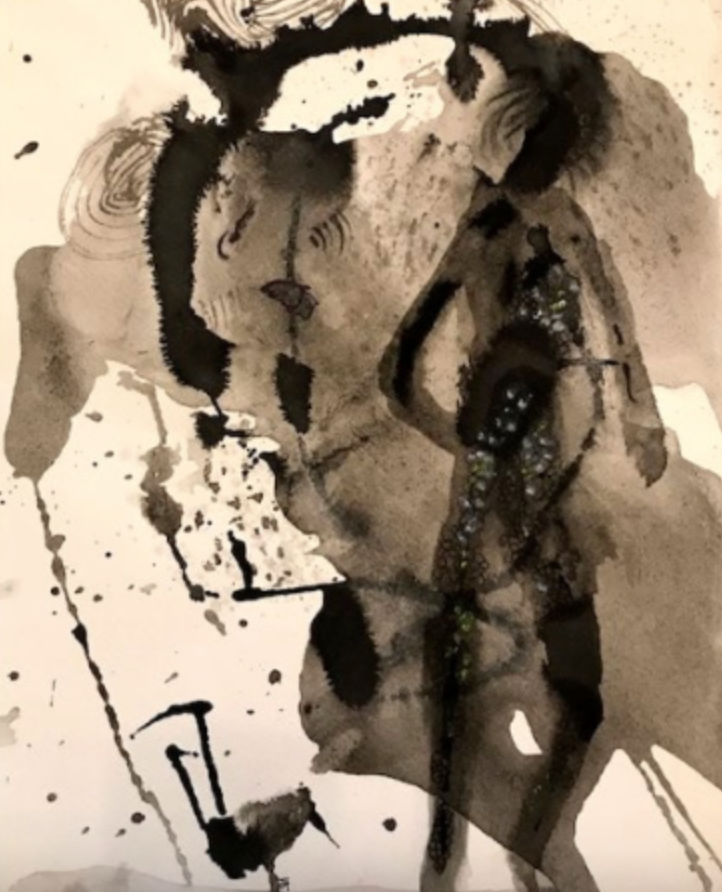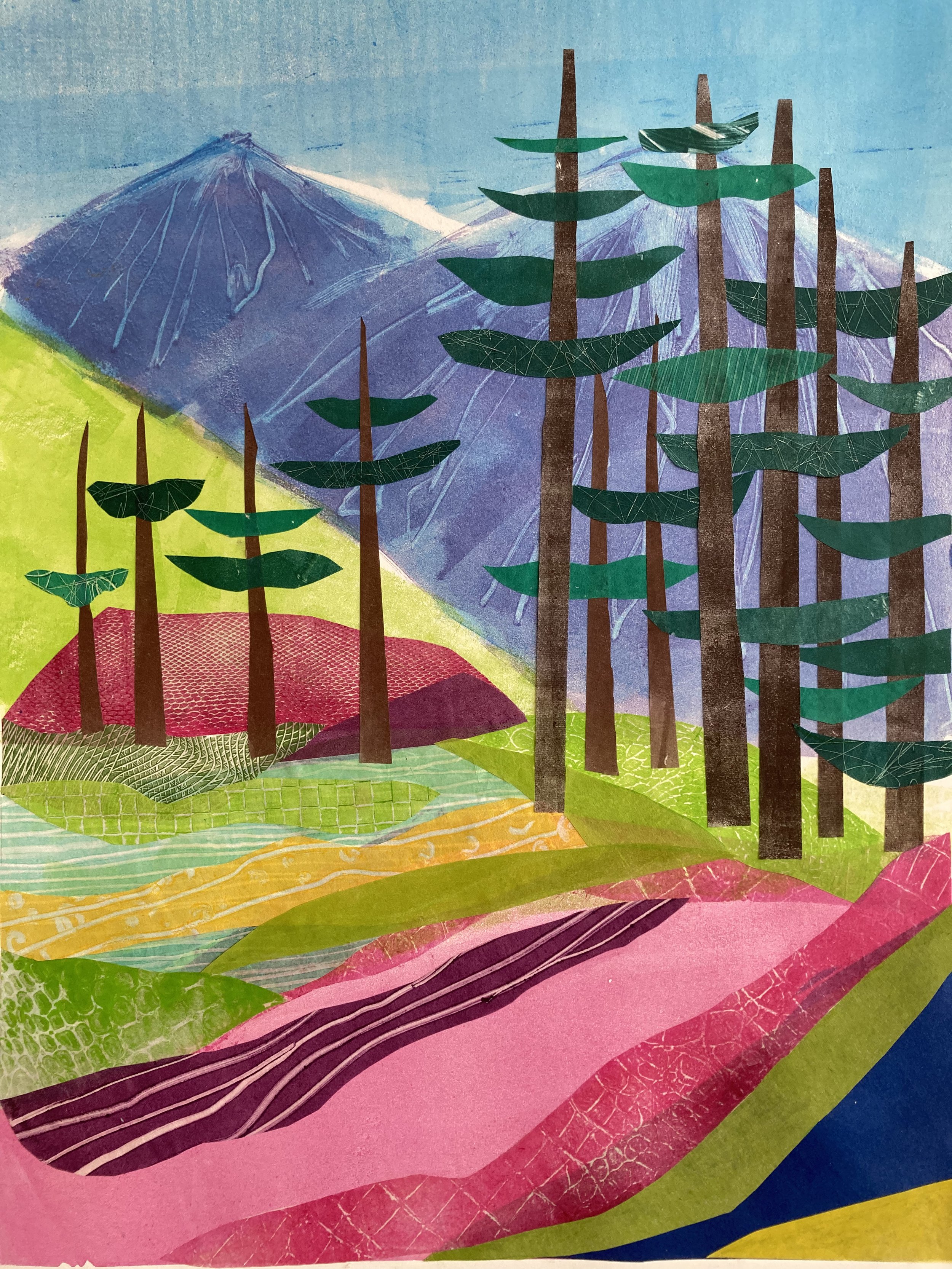
Becket Arts Center
2022 Juried Exhibits
Cindy Chandler-Guy: The monotype collages exhibited are inspired by landscapes, cityscapes and still life forms. I utilize the colors, shapes, textures, patterns and the layering of multiple hand inked papers with different markings and degrees of transparency in order to create one of a kind impressionistic and playful compositions. I love the challenge of creating a coherent composition by arranging the variant pieces of the collage together.
Ingrid Raab: As a ceramicist I explore physical dimensions of balance, containment and history. My shapes are often reminiscent of ancient functional forms. I interchange contemporary with familiar textures, shapes and materials with the hope of connecting feelings and thoughts in new ways.
Glenn Yarnell: Glenn Yarnell documents architecture in Springfield and wherever he travels. He tries to show the brightness that exists and to show the cityscape in new ways. He hopes his photos give people a chance to think about how they see themselves in the city, and how they see the city in their lives.

Ivor Parry: My paintings and drawings are in various mediums and are about concepts that I find visually interesting. They come mostly from my imagination, that mix real with objective and abstract. Which means that I have no particular style to hang my hat on.
Karen Khan: I am a contemporary Realist painter interested in creating the “new still life”. I am influenced by the quantum physics and I wish to explore ways of creating environments that help the viewer see the unexpected and hopefully beautiful fusion of disparate objects.
Carolyn Abrams: My work is about relationships. Connecting with my creative spirit and the world around me, most especially Mother Nature in all her beauty and her challenges. There is a voice in nature that touches us and connects us to one another in ways that evokes an emotion and stirs the soul. My work is about creating that connection with mediums such as cold wax and oil, acrylics and collage.
Thierry Borcy: My first encounter with black and white photography came about as a teenager. A friend of my parents visited and took photos of my cat. The subsequent prints revealed depth, soul, shapes and textures which were almost palpable. The same way as today I see shape and forms and not so much a tree or a stream. I see black, gray and white where there is color. Paradoxically the art of black and white photography makes me appreciate colors even more.
Ruth Rinard: My grandfather’s farm made me an artist. Golden wheat in the wind, expansive blue sky, billowing clouds, tall yellow tasseled dark green corn, shimmering heat lightning, searing dry heat, or small buildings on the distant horizon filled me with a sense of awe. Awe and intimacy, two constant threads in my work, are held together by narrative. As I start a painting, I have a title or phrase in mind. It becomes the narrative for me linking the deeply personal interior and the unfathomable outer world. My art strives to make visible this connection.
Joan Dix Blair: "Printmaking is the language I use to explain the world to myself. I ruminate when I see a beautiful object - I take a photograph which I call a 'capture' - as a future subject. My work intends to create a narrative using my environment as language. I live in a rural setting, surrounded by shifting weather, agriculture, and wildlife. These become the subject matter of my work. Often displayed in series, scrolls, or as artist books, my work invites a viewer to read these captured moments in time."
Shany Porras: Shany Porras's abstract paintings visually translate what one feels when listening to music. She started studying classical music when you, which has meant that music remains an essential part of her daily living. She 'sees' music as an abstract language, and she translates music to paintings, much in the same way she would translate one language to another. Shany chooses music that is inspirational to her, selecting music from a variety of genres, including popular and folk music from her home country of Venezuela, and today's popular or politically charged music. Each painting is unique to each musical piece. Her selection of mediums, including acrylic paint, graphite, wax crayons, ink, and spray paint, found objects, etc. hinges on her interpretation of the language of music. Her art is deeply influenced by Bauhaus and the American abstract painters of the 20th century, borrowing from their techniques and applying them as needed to interpret music.
Susan Miller: Self Portraits - During the past two years, having spent many hours in isolation, I used the only artist's model I had - myself. The results were 45 self portraits of introspection. The subjects are myself as I would imagine myself to be during a moment of time or experiencing an intense emotion. I used what materials I had at hand, paper and ink.
Yellowdog: I use concrete, stone and vintage marbles to create small wall sculptures. As a young child, I was given my grandfather’s childhood marbles which began a lifelong fascination. I especially love the faded colors and patterns of wear of old clay marbles and the beautiful collage effect that is created when they are beside each other. I have collected stones most of my life. I love the way the ocean softens their edges and leaves them glowing at the shoreline. I wander the beaches of the cape and islands looking for perfect stones to incorporate into my work. I am intrigued by the varied colors and textures of schist stone that is quarried in the Berkshire hills and love to recycle leftover bits into my sculptures.
Tara Bronner: Tara Bronner focuses on photographs layered in bright vibrant colors as a way to express the joy and relief of coming out of three long years of the pandemic and to emphasize life affirming beauty that is all around us if we only take the time to look up and away from our screens and step out into world.
Ilene Richard: My figurative work is based on my observations of people involved in everyday activities. I create an emotional connection for not only the viewer but also between the people depicted in my work. A strong design, vibrant color palette and a narrative quality, are what makes my work truly my own.
Madge Evers: "My work originates with foraged materials and explores memory, adaptation, and decomposition. I use various media, including the cyanotype process and paint, but also spores, the powdery substance that resides in the gills and pores of mushrooms. When released in nature, mushroom spores land on nearby soil, leaves, or rocks, always with the intention of survival. In my process, these tiny reproductive particles fly or float, then alight on to create works on paper. Whether with spores, alternative photographic processes, or paint, my goal is to evoke the familiarity and inherent mysteries of growth and regeneration."
Michael Lampro: I am a self-taught photographer and often use unconventional angles and close-ups to present the scene or subject in a new and unusual way. Weather and lighting also inspire my creativity. From chasing the late afternoon “magic” light on a summer day, to rushing out after a winter storm, I truly enjoy the opportunity to capture the natural world.
Sue Fontaine: The unfetter of the abandoned landscape. Nature mixed with architectural elements that explore the sense of place with line, texture and paint blending the forgotten landscape with a new topography. The work is created with acrylic paint, graphite pencil drawings, gel transfer and pattern skins on handmade stretched canvas.
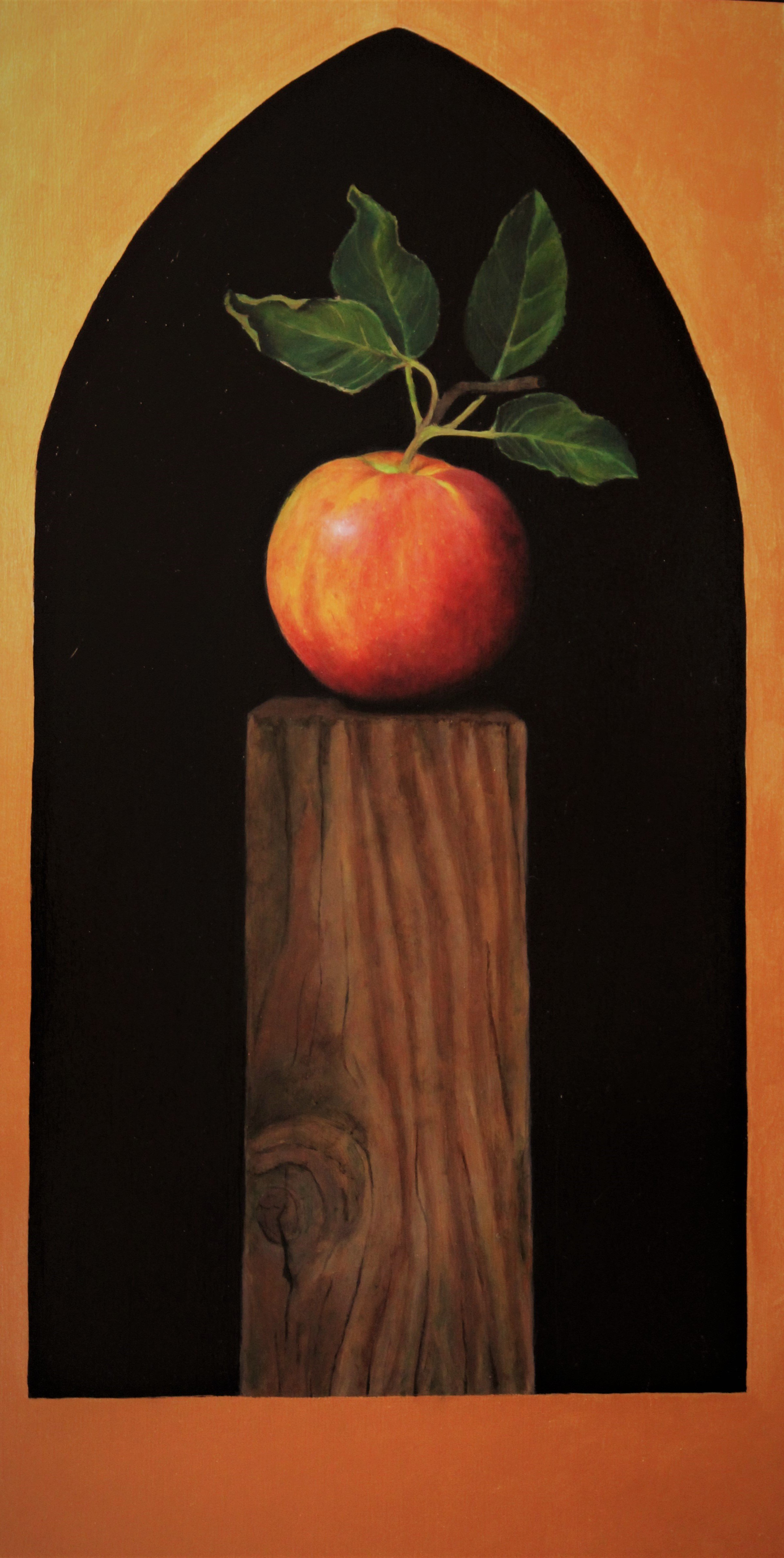
Kristine Villeneuve-Topor: I live and breath art. I believe imagination is a vital part of the human spirit. It's an inner life that we all need. I am truly grateful for my gift and that I can share with others. Even if it's for a moment.....there's nothing like touching one's heart, mind and spirit. That is why I create Art.
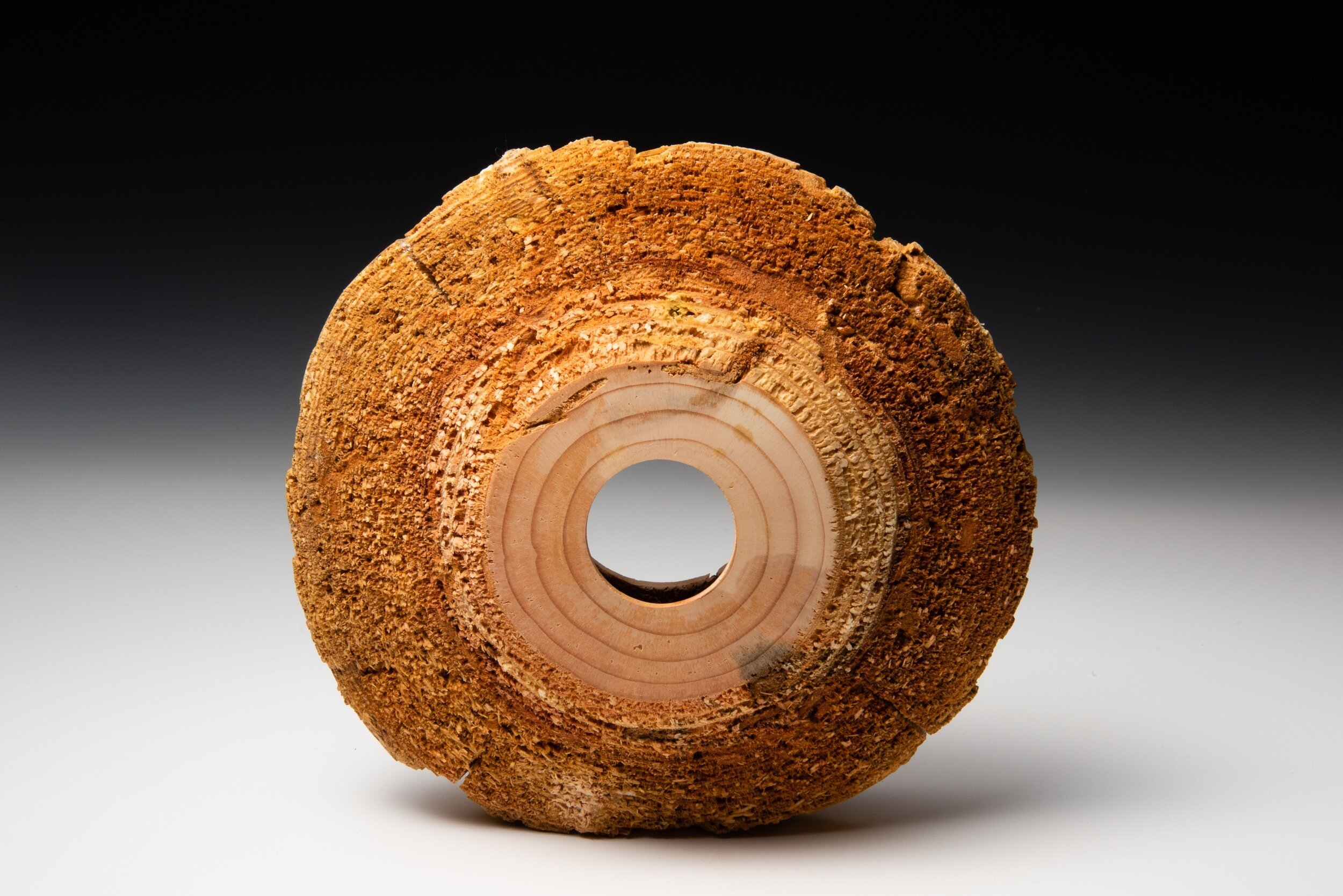
Lou Wallach: "I create one of a kind pieces made from sustainable wood that are inspired by the material and the environment from which it came. Many designs reflect the natural shapes of plants, stones and water, while others draw on the classical shapes of ancient vessels. Ultimately each piece is meant to bring the nature of the Berkshires into the home. Whether for use, or simply display, they connect to trees and land. I look for the intersection of natural form and imagination that reveals itself as the piece evolves. The wood is my partner in design, it has within it a form that has to be respected and allowed to influence the finished work. Trees are not cut down for my material."
Wit McKay: Wit McKay is a visual artist based in northwest Massachusetts. He creates digital collage images, fabricated in the computer from multiple photos gathered in the field. They are presented as large-scale archival pigment prints. His most recent work examines subjects which are ubiquitous, overlooked and mundane. Complexity and contradiction are embraced in his aesthetic. In the everyday he reveals meaning. He transcends the everyday and crafts artworks at once beguiling and confounding. Their rich colors and opulent surfaces are animated by an untethered perspective.

Polly Kursach: As I draw, paint or sculpt living creatures I try to identify their “emotional indicators”, that is, what about their external features reveals their internal state.
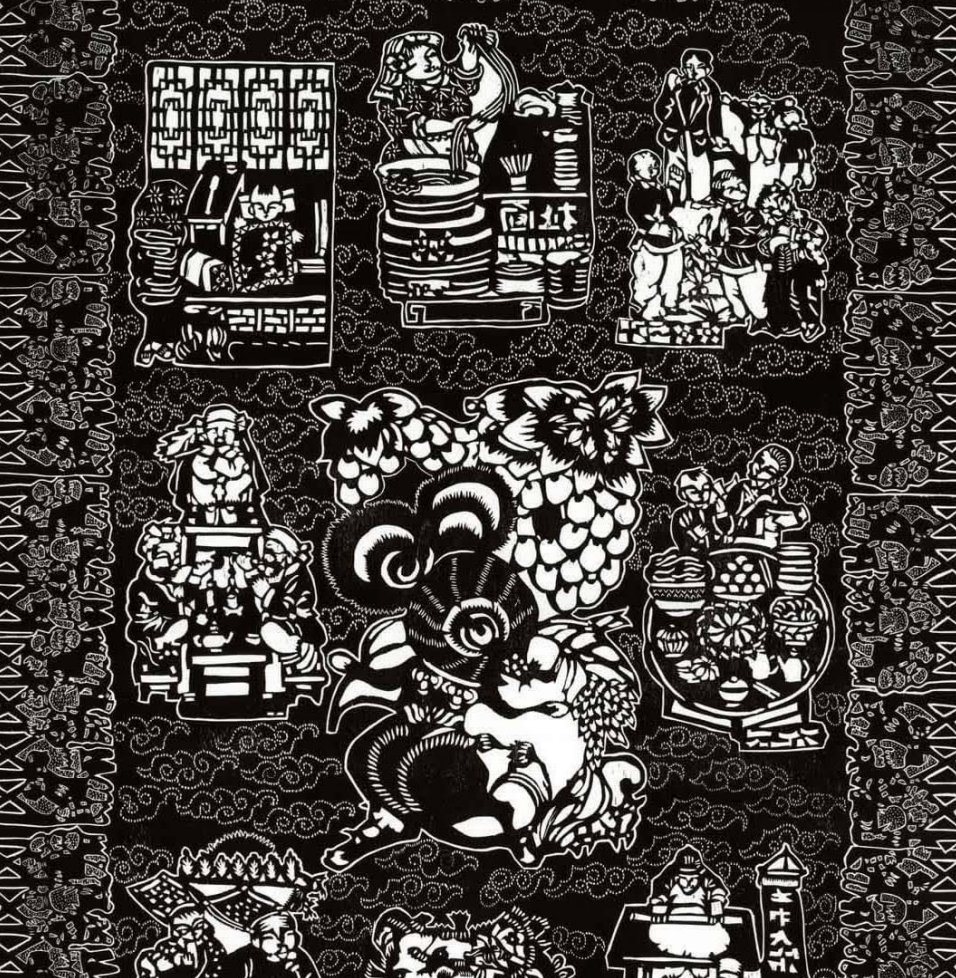
Joan Rooks: “Do you see that ? The way the colors move with the figure ?” Art is vision and experimentation. We are often surrounded by the obscure visual. Putting these “visions “ into structural form is my art my passion. I have never shied away from trying a new technique. Always the one to think , “I can do that ,” drawing, woodblock printing, ceramics, natural sculpture are all a part of my artistic expression.
Lydia M. Kinney: I paint impossible spaces. These environments are imagined as fragmented and disrupted spaces to open their possibility: anything can happen in this space. I employ the freedom of abstraction to detach from the constraints of deepest anxieties. The work is a reference point to my own discomfort and unease, a place to distill both The Worst That Could Happen, and The Best of What’s Possible. It is a place to visualize incongruence, to hold dissonance.

Valerie McQuillian: My whole life, I have pursued my interest in creating art. I enjoy working in different media and exploring what each has to offer. My subject matter consists of mostly nature, garden and wild flowers, birds and animals, as well as my surroundings. I like to capture the details and complexities of objects or scenes that appeal to me, either from their intrinsic beauty or quality of mood.



